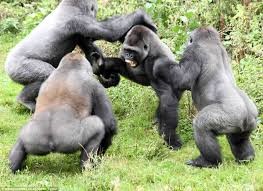Part 2 of 3. Why Tesla and 200,000 Australian auto workers need each other

Tesla has pulled off the greatest sales and marketing campaign in the history of the auto industry, without one car on the show room floor. In his second of three blogs Stewart Nattrass looks at the current state of the global market and where we could be in five years.
Let’s start with a recent speech made by the CEO of GM, Mary Barra. Her opening salvo I believe was that the industry will experience more change in the next five years than it has in the last 50 years.
Surely not more turbulent than the GFC? Let’s explore what has happened since the turn of the new millennium and just what effect the GFC has had on the global auto industry.
The existing car manufacturer’s market capitalisation:
- Toyota 160 billion
- Volkswagen 79 billion
- Daimler 72 billion
- Ford 54 billion
- BMW 54 billion
- Honda 50 billion
- GM 47 billion
- Nissan 45 billion
- Mitsubishi 29 billion
- Mazda 10 billion
- Fiat Chrysler 9 billion
All these figures were obtained over the net on the 8th June 2016. I don’t profess to their accuracy; it is the general market cap size about which I want to make a point.
The effects on the auto industry of the GFC
All of these established car makers are valued at a fraction of what they should be. They have all been through very turbulent times since the GFC. They all haemorrhaged billions of dollars during that time which left them anaemic and in need of a blood transfusion. They had to slash and burn to get back to their core businesses, and governments around the world made enormous concessions to sustain their respective car companies.
Second tier companies were forced through necessity to partner up with each other for survival. The efficiency required to reach a sustainable footing was gained through cross shareholdings, sharing both knowledge and manufacturing resources. For example Fiat bought 20% of Chrysler (2009-2014). Volkswagen bought out Porsche (2009-2012). Renault bought 43% of Nissan who bought 15% of Renault to form the Renault-Nissan alliance (1999) who partnered with Avtovaz (Russia 2008) who partnered up with Daimler (Mercedes Benz 2010) who together bought 34% of Mitsubishi. (2016).
The other major event was the emergence of the Chinese Market.
In 2000 there were 2 million cars produced in China for domestic consumption. In 2015 there where almost 70 million passenger cars built in the world, 30% or 21 million were built in China predominantly for domestic use. Easily making it the world’s single largest market.
All the major car producers swarmed to set up shop in China, but China was and still is emerging very slowly from communism. Setting up manufacturing in China is very complicated and extremely competitive. Firstly, the government has set up 100% state-owned manufacturers whose names we wouldn’t recognise because they only sell to the domestic market. These companies are not dependent on private sources of money; it’s all supplied by the government. Secondly, any foreign company has to apply to the government to set up business. The government then partners them up with a S.O.E (State Owned Enterprise). The majority of the partnership must be owned by the S.O.E. and intellectual property must be shared.
Back to the present day. Where does Tesla fit in?
Tesla’s market capitalisation is 34 billion. That places them in the top ten by market cap. Surprised? I was. Tesla currently makes less than 100,000 cars a year. GM is the most prolific producer with 10 million units or 15% of the world’s car production. Tesla only makes 1% of the cars that GM makes but is already 72% of GM’s value. So why is Tesla not dwarfed (in market cap terms) by these very well established players?
Tesla is not carrying any of the burdens that the other manufacturers have accumulated whilst doing business during the GFC. It is not massively invested in the combustion engine and it just pulled off the greatest sales and marketing campaign in the history of the auto industry, without even one car on the show room floor. Production of the model 3 is still at least 15 months away.
The model 3 has taken a very large jump in front of other electric cars as it promises to have at least a 250 mile range before needing to recharge. Its entry into the market is hindered by its current lack of scalability. As I stated in part one, Tesla will need much more production capability than currently envisaged to make any real impact. Global demand by the year 2020 is anticipated to reach 100 million cars a year. Hence my suggestion that Tesla needs to quickly investigate setting up a second car production plant here in Australia. Otherwise the jump it has on its competitors will be very short lived.
Back to the speech by GM’s CEO Mary Barra.
Now that we have an idea of the change that has occurred to the auto industry since 2000 let’s explore the other half of her opening statement, that the next five years will see more change than has occurred in the last 50 years. What could happen in the next five years that could out do the GFC?
Firstly, the emergence of the hybrid and the all-electric car. Is the combustion engine dead? Governments around the world are mandating the move to zero emissions. Which in turn is pushing hybrid sales and will eventually lead to all- electric cars. The established car companies have all produced a hybrid car and all produce or intend to produce an all-electric vehicle. What is proving difficult to achieve is a workable distance that these electric cars can travel between recharges.
Secondly, the race towards the driver-less car. The meeting of the old world and the new – the hard, relatively slow auto manufacturing industry with the new fast paced computer world.
This is where it starts to get really complicated. There is speculation aplenty. Suggestions are that we will no longer own cars in the future, but rather use a pooled electric car with no driver along the lines of Uber.
Enter the new giants of the internet world, Google (547 billion market cap) and Apple (529 billion market cap), both with vast cash reserves available to buy or create any of the missing links in their preferred vision of the future. They could even buy car companies before they can regain their full strength.
Then there is Uber (62 billion), Didi (the largest in China), and Ola (the largest in India), the ride-sharing platform specialists.
Then there are the real big boys who have yet to make a play… the oil companies. If the combustion engine is replaced by the electric engine what will the oil companies replace their revenue with? These are the top ten oil companies ranked by turn-over: No. 1 Aramco, the Saudi oil company which does not trade on any stock exchange but is said to be valued anywhere between 1 and 10 trillion; the next three biggest oil companies are all Chinese owned; No. 2 Sinopec, No.3 China National Petroleum Co, N0. 4 Petro China … No.5 Exxon Mobil (USA) No.6 Shell (Dutch and UK) No.7 Kuwait No.8 BP. No.9 Total SA (French) and No.10 Lukoil (Russia). 
What happens when several 800 pound gorillas get together and face off to see who the alpha male is? Stick around, all will be revealed in the next five years.
Where could we be in five years?
Here is an exercise designed to stretch our minds to try and comprehend the impact that is about to befall the car industry. The idea is along the lines of “fantasy football”. Let’s make a new version called fantasy auto. You get to form your own dream team that predicts the position of the auto industry five years from now.
My dream team is the “the Silicon Valley Rattlers”. In this scenario, Google dramatically increases its current shareholding in Uber which then buys into Tesla Motors which sets up in Australia with some locals namely B.H.P. and Rio, the biggest suppliers of copper, lithium and iron ore and also massive engineering skills for big projects. They go on to buy GM for scalability and beat the competition with the biggest pooled driver-less car company and dominate the world production of Lithium Ion batteries.
Have your say – it’s our world too.
A few weeks out from the Australian election and not a word about the impending demise of the Australian auto Industry and 200,000 jobs. Neither of the two major parties have mentioned the elephant in the room.
This article first appeared on LinkedIn and is republished with the permission of the author. Read the first and third blog.
Stewart Nattrass started out working in his family’s plastics company, winning innovation and small business awards and an Australian Design Award for his innovative design. Taking his product overseas his company won international product awards, stumping the world’s best tool makers as to how it was done. He later moved into the travel industry, building his own business up over ten years, expanding and positioning himself in a new industry. Stewart has empathy and affinity with the autoworkers affected, knowing firsthand what it’s like to re-engineer a new career and start again; twice. He wouldn’t wish that process on anyone, least of all 200,000 Australians.









